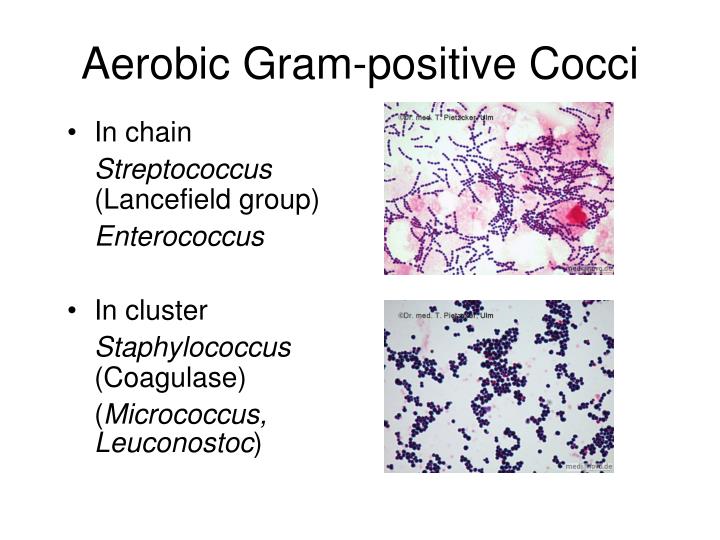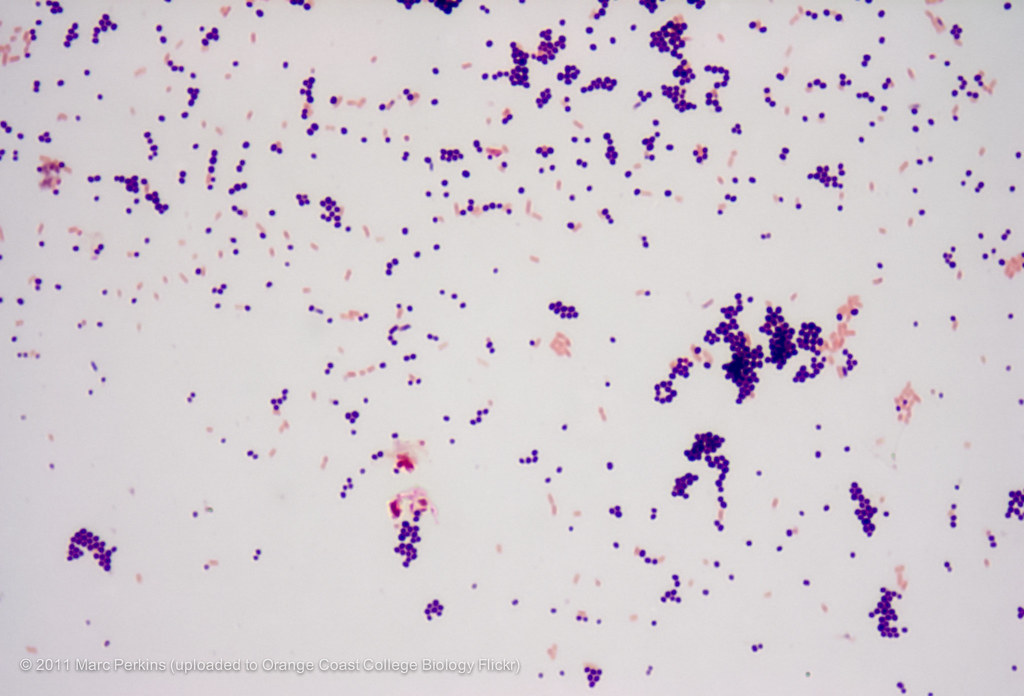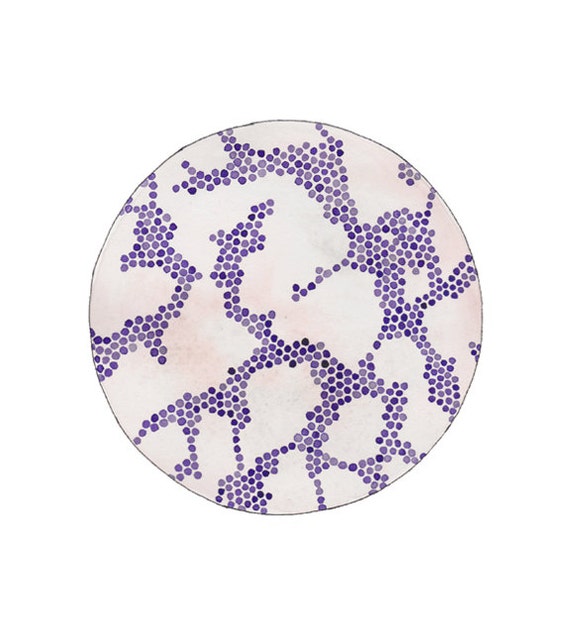

Gram positive cocci in clusters skin#
are normal flora of skin and mucous membranes, however they can cause disease when introduced into normally sterile sites in the body. Gram-positive cocci, arranged in grape-like clusters aureus and is usually oxidase negative.THE VIRTUAL EDGE: Lab 15 Enzyme-Mediated Biochemical Activities of Bacteria: Physiological Testing Iġ. Ribitol teichoic acid (Polysaccharide A) is present in Staphylococcus aureus. The cell wall of the bacteria contains teichoic acid. Microscopically cells occur singly and in pairs, short chains, and grape-like clusters. S aureus can be confirmed by testing colonies for agglutination with latex particles coated with immunoglobulin G and fibrinogen which bind protein A and the clumping factor, respectively. If the specimen is suspected to be contaminated it is plated on mannitol salt agar containing 7.5% sodium chloride.Īnother test is production of thermostable deoxyribonuclease. The organism from the clinical specimen from blood culture or pus is then streaked over solid media such as blood agar, tryptic soy agar or heart infusion agar. Identification of S.aureusĪfter sample from the lesions are taken, they can be stained with Gram stain. This cannot be done on blood agar since blood itself will produce bubbles. Catalase-positive cultures bubble at once. On an agar slant or broth culture of the bacteria several drops of 3% hydrogen peroxide are applied.

This test helps to distinguish between streptococci (that is catalase-negative) and staphylococci (which are catalase positive). This clustering helps to distinguish staphylococci from streptococci, which usually grow in chains. The clusters arise because staphylococci divide in two planes. They may also occur in pairs and occasionally in short chains.

These bacteria are Gram-positive cocci about 0.5 – 1.0 μm in diameter. What is the prevalence of bacterial co-infections during COVID-19?.Spex CertiPrep® adds Staphylococcus aureus and Salmonella Pathogen Detection Kits to its portfolio.Highly antibiotic-resistant strain of MRSA on pigs is capable of rapidly adapting to human hosts.These can cause disease and infections in certain situations. Of these, 11 are found in humans as harmless bacteria on skin, in the nose and throat. This is especially so with DNA-DNA hybridization. Taxonomy and naming conventionsĪt least 30 species of staphylococci have been recognized by biochemical analysis. In the body antibodies neutralize staphylococcal toxins and enzymes. The bacteria also produce certain toxins. Virulence is the effect of many factors expressed during infection. aureus expresses certain proteins and polysaccharides on its surface. Nevertheless, the term is still in widespread use among clinical microbiologists. This is because coagulase is a marker for S aureus but there is no direct evidence that it is a virulence factor. These days coagulase reaction is no longer used to classify S.aureus. It is the CNS that is present as harmless bacteria on skin but some of these may cause infections as well. The coagulase-negative staphylococci (CNS) are now known to comprise over 30 other species. The coagulase-positive staphylococci constitute the most pathogenic species S aureus. Staphylococcus were earlier divided into two groups on the basis of their ability to clot blood plasma. Microbiology of Staphylococcus:- Coagulase reaction

They are gram positive bacteria that are small round in shape (cocci) and occur as clusters appearing like a bunch of grapes on electron microscopy. Staphylococcus aureus bacteria are pathogens to both man and other mammals. Ananya Mandal, MD Reviewed by April Cashin-Garbutt, MA (Editor)


 0 kommentar(er)
0 kommentar(er)
